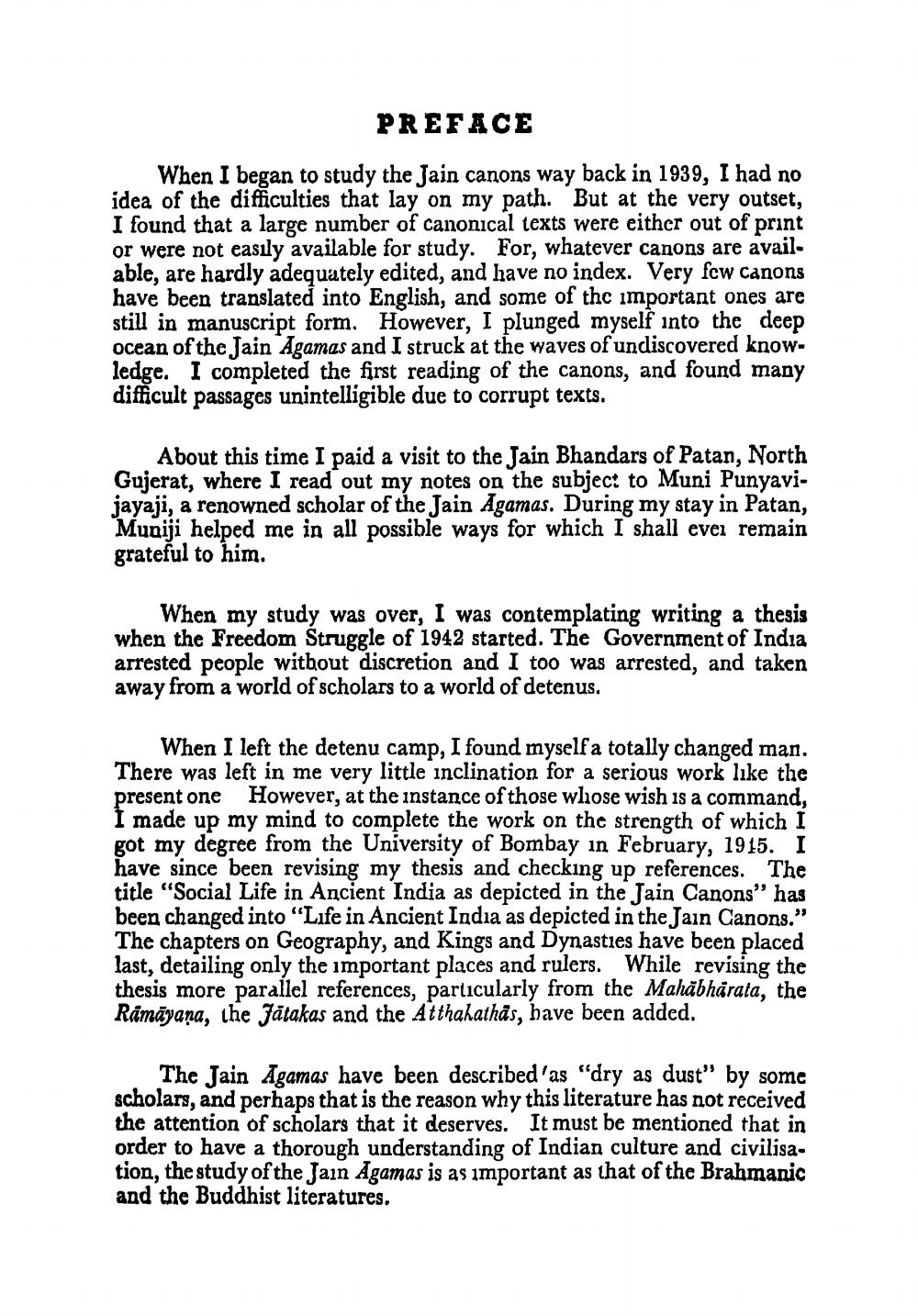Book Title: Life in Ancient India as Depicted in Jain Canons Author(s): Jagdishchandra Jain Publisher: New Book Company View full book textPage 7
________________ PREFACE When I began to study the Jain canons way back in 1939, I had no idea of the difficulties that lay on my path. But at the very outset, I found that a large number of canonical texts were either out of print or were not easily available for study. For, whatever canons are avail. able, are hardly adequately edited, and have no index. Very fcw canons have been translated into English, and some of the important ones are still in manuscript form. However, I plunged myself into the deep ocean of the Jain Agames and I struck at the waves of undiscovered knowledge. I completed the first reading of the canons, and found many difficult passages unintelligible due to corrupt texts. About this time I paid a visit to the Jain Bhandars of Patan, North Gujerat, where I read out my notes on the subject to Muni Punyavijayaji, a renowned scholar of the Jain Agamas. During my stay in Patan, Muniji helped me in all possible ways for which I shall ever remain grateful to him. When my study was over, I was contemplating writing a thesis when the Freedom Struggle of 1942 started. The Government of India arrested people without discretion and I too was arrested, and taken away from a world of scholars to a world of detenus. When I left the detenu camp, I found myself a totally changed man. There was left in me very little inclination for a serious work like the present one However, at the instance of those wliose wish is a command, I made up my mind to complete the work on the strength of which I got my degree from the University of Bombay in February, 1915. I have since been revising my thesis and checking up references. The title "Social Life in Ancient India as depicted in the Jain Canons" has been changed into "Life in Ancient India as depicted in the Jain Canons." The chapters on Geography, and Kings and Dynasties have been placed last, detailing only the important places and rulers. While revising the esis more parallel references, particularly from the Mahabharata, the Rāmāyana, the Jätakas and the Atthahathäs, have been added. The Jain Agamas have been described as "dry as dust" by some scholars, and perhaps that is the reason why this literature has not received the attention of scholars that it deserves. It must be mentioned that in order to have a thorough understanding of Indian culture and civilisation, the study of the Jain Agamas is as important as that of the Brahmanic and the Buddhist literatures.Page Navigation
1 ... 5 6 7 8 9 10 11 12 13 14 15 16 17 18 19 20 21 22 23 24 25 26 27 28 29 30 31 32 33 34 35 36 37 38 39 40 41 42 43 44 45 46 47 48 49 50 51 52 53 54 55 56 57 58 59 60 61 62 63 64 65 66 67 68 69 70 71 72 ... 429
